I’m Ken Kuwako, your science trainer. Every day is an experiment.
Onion cell observation is a classic experiment in middle school science. But are you looking for a way to go beyond the textbook and spark your students’ “why?” and “wow!” moments? In this article, I’ll share a few tweaks to the standard procedure and sprinkle in some “seeds of science” that will make the lesson truly memorable. Let’s create a class that ignites your students’ curiosity together!
Supplies and Preparation Tips
You’ll need: an onion, two slides, two cover slips, a microscope, tweezers, a staining solution (acetocarmine), a dropper, and a cutter.
The supplies are simple, but they hold the key to a fascinating discovery. The most important thing is a fresh onion. You can easily find them at any supermarket.
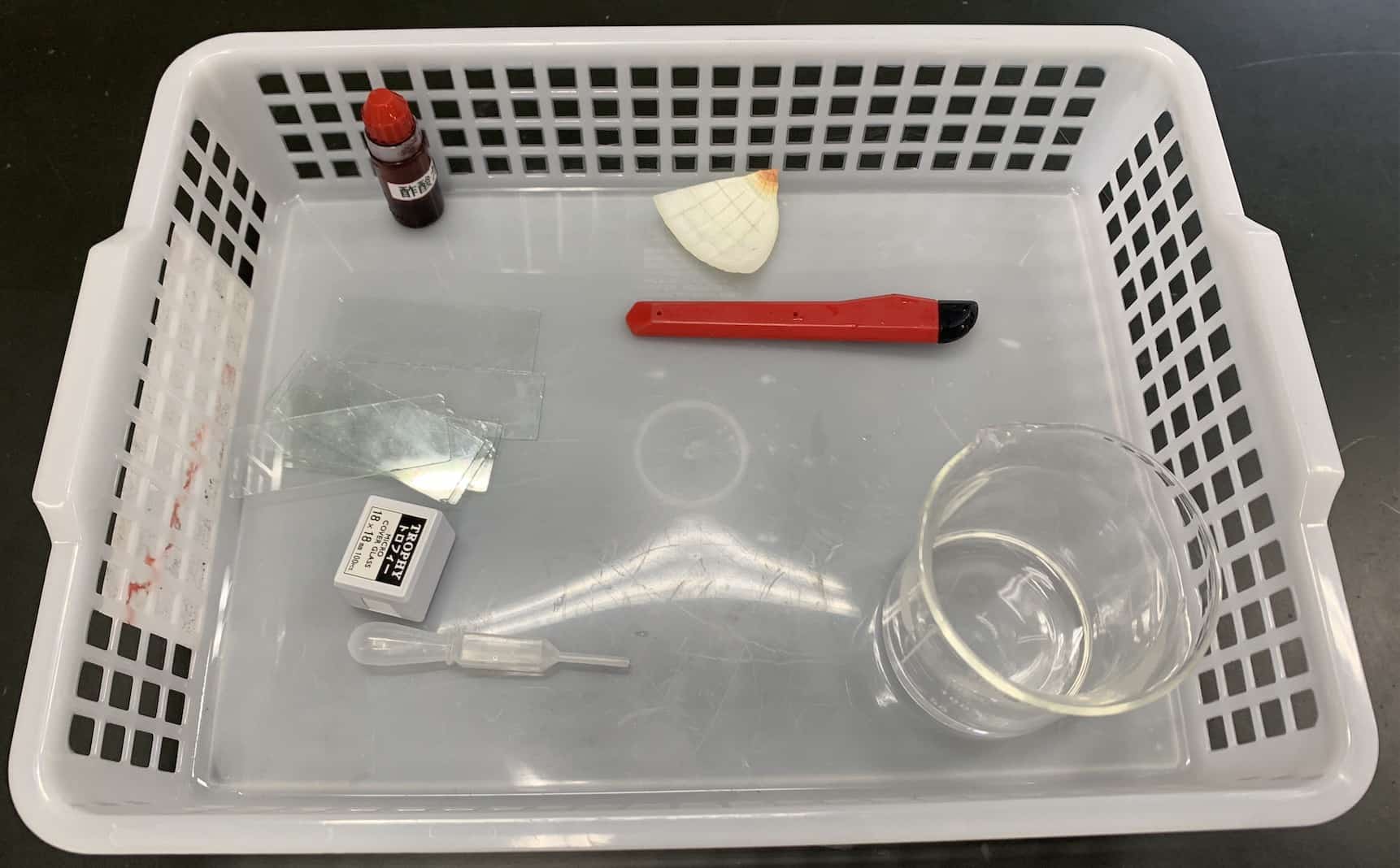
*Please note that tweezers are not pictured.
The “Magic Ritual” of Peeling
Cut the onion into eighths, peel off a fleshy layer, and then slice that in half. Score the inner surface of the layer with a cutter, making a 5mm square.
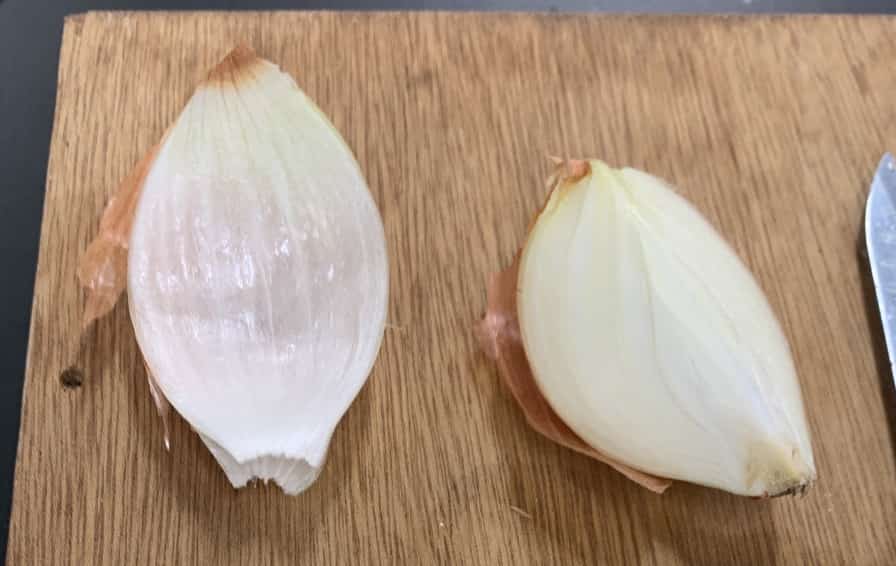
This little cut is the key to easily peeling off the delicate skin (the epidermis). Let students experiment with the depth of the cut; it’s a great hands-on learning experience.
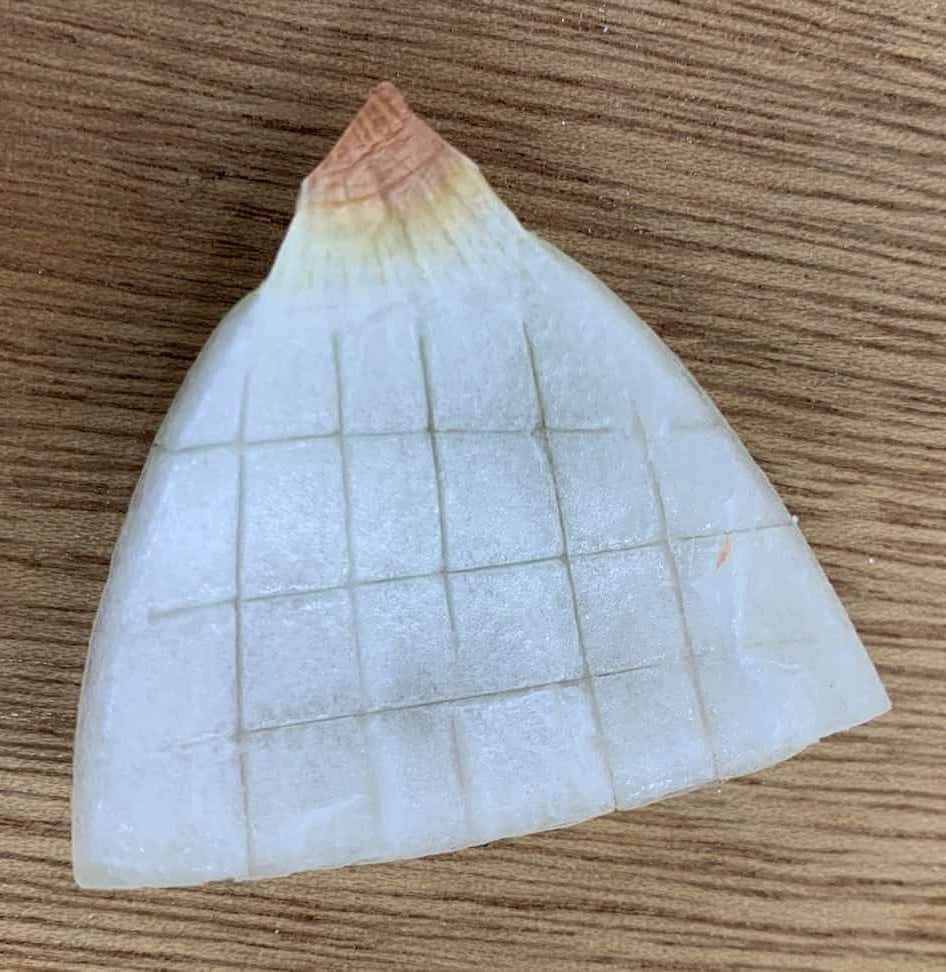
Using tweezers, carefully peel off the skin along the cut. As you do, ask your students, “Why do you think onions have such a thin layer of skin?” This thin layer actually helps the onion retain moisture. It’s a perfect opportunity to connect the plant’s structure to its function.
Place the peeled skin on two slides, one for each student. A small detail that makes a big difference is to remind them to place the skin on the slide so it’s oriented the same way it was on the onion. This ensures a cleaner view.
Use the dropper to place a drop of water on the skin on one slide and a drop of acetocarmine on the other. Let them sit for about three minutes.
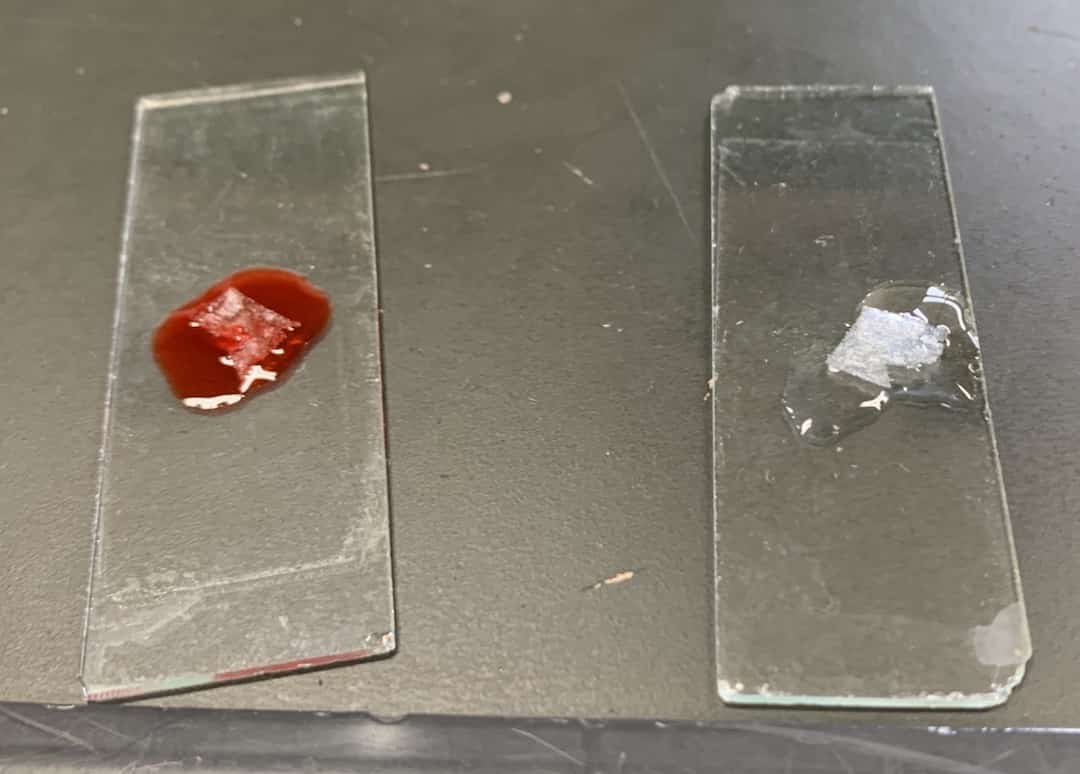
Here’s another question for your students: “Why are we making two slides?” One is for a “plain” observation, and the other is for “staining.” Explaining this simple comparison makes the purpose of the experiment crystal clear.
A Glimpse into the “Cellular World”
Carefully place a cover slip over each sample, trying to avoid air bubbles. If bubbles do appear, gently press them out with your tweezers.
Now, for the main event: looking through the microscope. Start with the lowest magnification (10x eyepiece × 4x objective = 40x), then move up to 100x and 400x. When focusing, especially at high magnification, remind students to watch from the side to prevent the objective lens from hitting the slide.
When students get to 400x magnification, they’ll see the “microscopic world” for the first time. This sense of wonder is often what sparks a lifelong interest in science. Have them sketch what they see, paying close attention to the shape and characteristics of the cells.
The Big Reveal: Water vs. Acetocarmine
The most exciting part of this experiment is comparing the sample with water to the one with acetocarmine stain.
The Water Sample
40x (10x eyepiece, 4x objective)
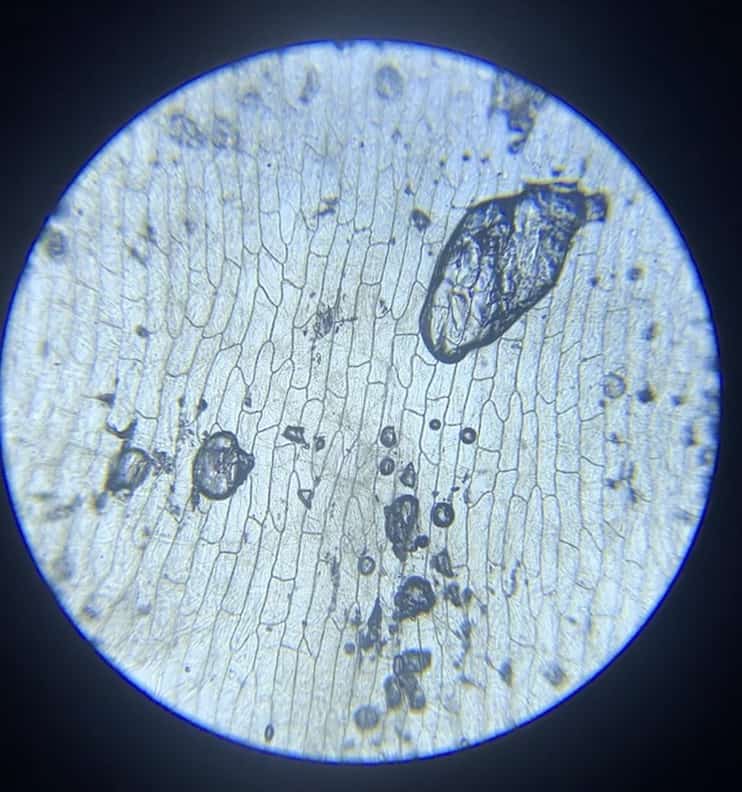
100x (10x eyepiece, 10x objective)
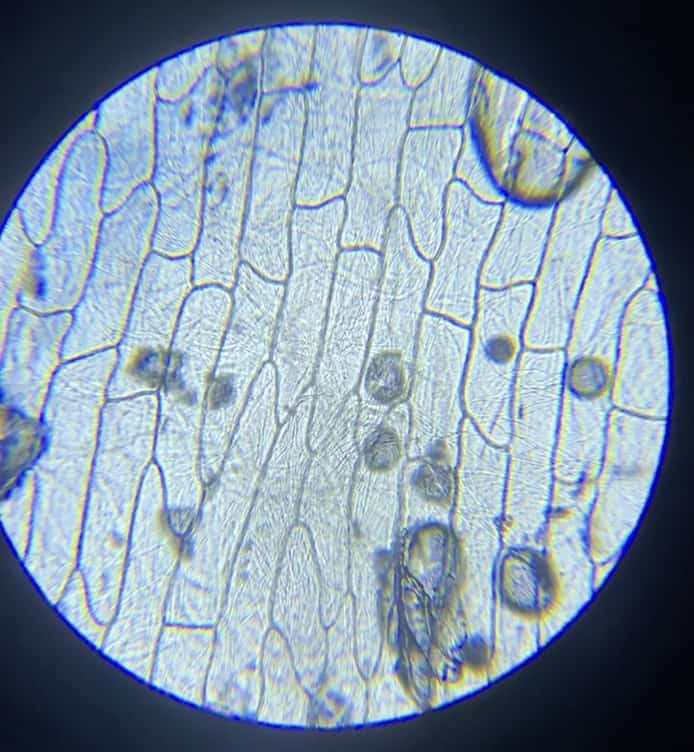
400x (10x eyepiece, 40x objective)
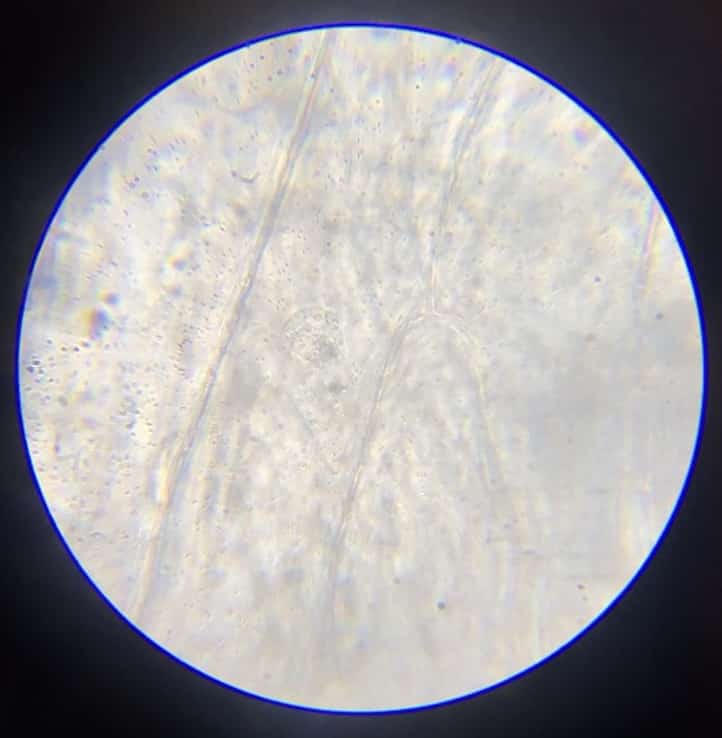
In the water sample, you can barely make out the outlines of the cell walls and cytoplasm, but the nucleus in the center of the cell is almost invisible, like a ghost.
The Acetocarmine-Stained Sample
40x
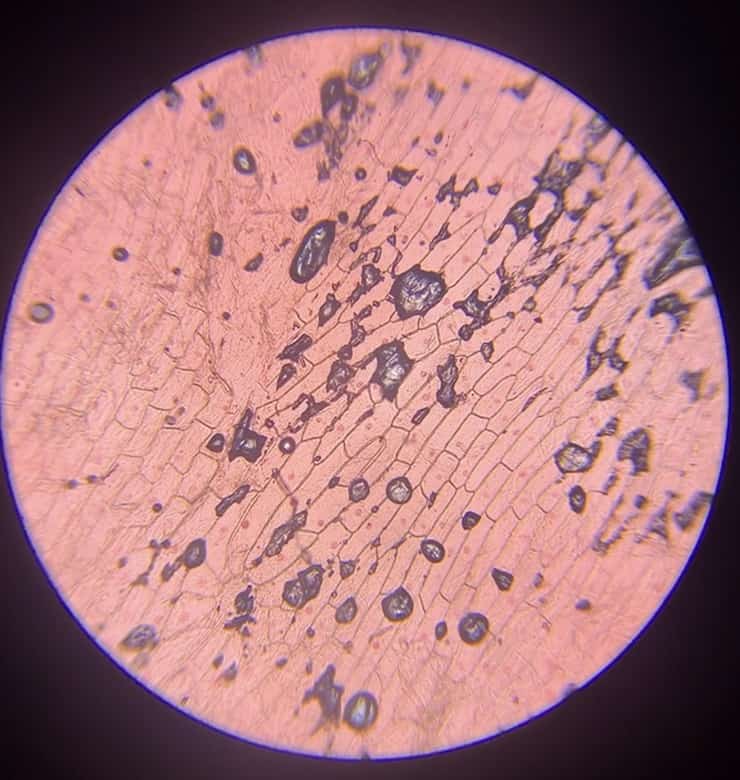
100x
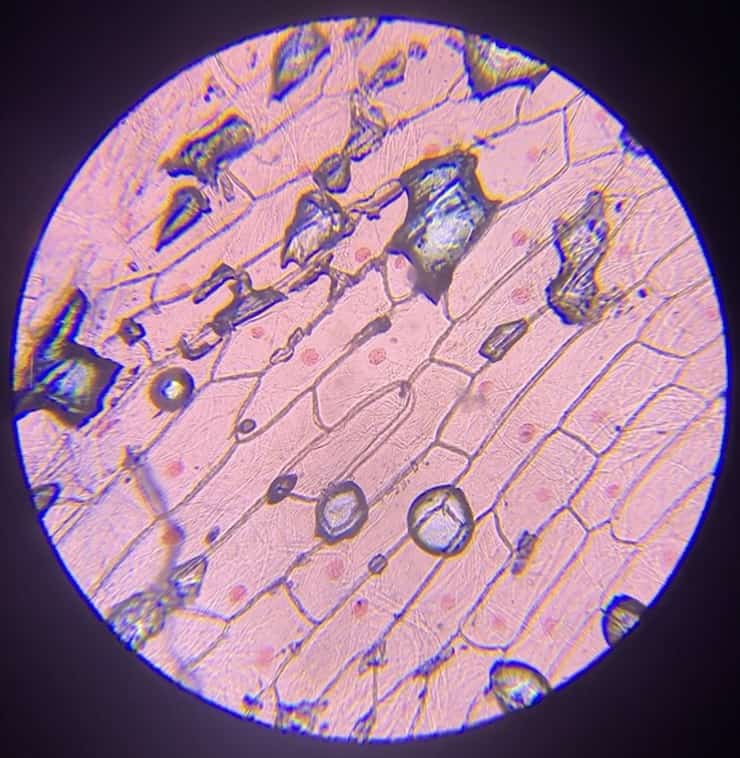
400x
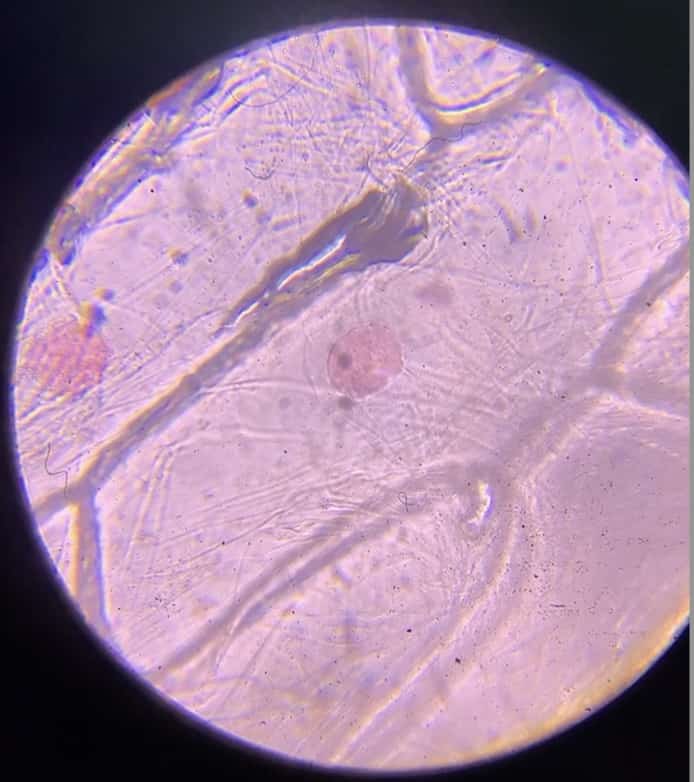
With the acetocarmine stain, the tiny dots inside the cells suddenly become clear and vibrant red. This is the nucleus. Ask your students, “What can you see now that you couldn’t before?” That moment when the invisible becomes visible is the true magic of science.
The feeling of “wow!” is different for everyone. I hope these tips help you create a lesson that leaves a lasting impression on your students.
Contact and Requests
Discover the fun and wonder of science! Here you’ll find easy-to-understand explanations and tips for fun science experiments you can do at home. Take a look around!
About the author, Ken Kuwako: Click here
For requests (writing, lectures, science workshops, TV supervision, appearances, etc.): Click here
– Article updates are posted on X!
![]() The Science Channel features videos of experiments!
The Science Channel features videos of experiments!